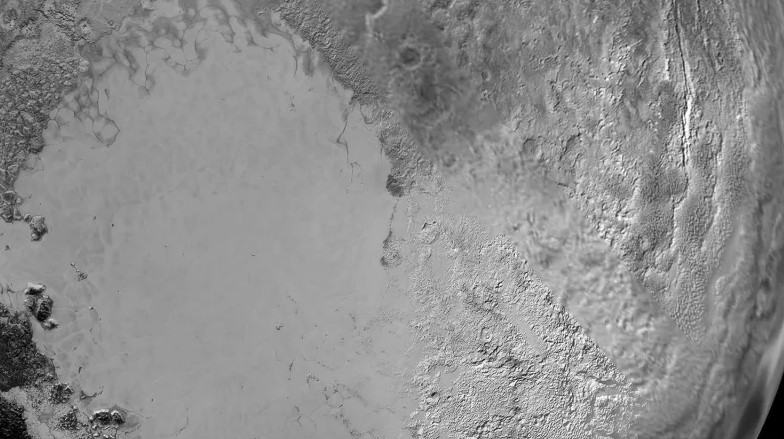
Recent results suggest that Pluto has a liquid water ocean buried beneath its icy shell. But how could such a thing be possible at the frigid outer edges of the solar system? Scientists from Japan and the United States might have an answer.
In a paper published Monday in Nature Geoscience, these researchers speculate that perhaps, Pluto’s ocean is kept insulated by a layer of gas beneath the ice. If this hypothesis proves true, then this mechanism might keep other icy worlds from freezing over completely.
“If this mechanism is common, then oceans might be common on other large [Kuiper Belt objects],” study co-author Francis Nimmo from the University of California, Santa Cruz told Gizmodo.
The paper is mainly an inference based on combining other pieces of evidence. The New Horizons mission flew by Pluto in 2015 and discovered that it was quite complex, geologically. In 2016, scientists’ models suggested that the Sputnik Planitia, the lefthand lobe of the dwarf planet’s “heart,” could have a subsurface, partially-liquid ocean like the ones on the icy moons of Jupiter or Saturn.
That’s pretty wild to think about: something as distant and as small as Pluto isn’t completely frozen, but might have liquid water beneath its surface. Scientists wondered how that could be possible. Pluto doesn’t have the gravitational energy from a nearby massive planet to maintain tides and help warm the water. Nor would heating from the radioactive decay of its elements help avoid a complete freeze, according to the new paper. And it doesn’t seem like there’s enough ammonia on Pluto to dissolve into the water and raise its melting point.
Instead, the scientists propose that the ice shell has a layer of water ice cages that trap gas, like methane, inside. Without the layer, the ice would remove heat from Pluto’s interior. But the “clathrate hydrate” gas cage layer would have different thermal properties that would slow the ice’s ability to take heat from the water. And the methane trapping would also explain why scientists haven’t observed much methane in Pluto’s atmosphere, Nimmo said.
The paper is “quite interesting,” J. Hunter Waite, a program director at the Southwest Research Institute not involved with this study, told Gizmodo in an email. “Understanding the role of processes like clathrate formation increases the knowledge base for exploring Ocean Worlds and their role in solar system formation and evolution and thereby broadening our horizons as to what constitutes habitable environments,” he continued.
But he warned that scientists still know little about Pluto’s overall composition, and must look to other objects like comets and meteorites to guide their hypothesizing.
It’s still interesting, though. “Our results suggest that a long-lived ocean can exist even without tidal heating, which is important to maintain oceans in icy satellites” study first author Shunichi Kamata from Hokkaido University in Japan told Gizmodo.
























